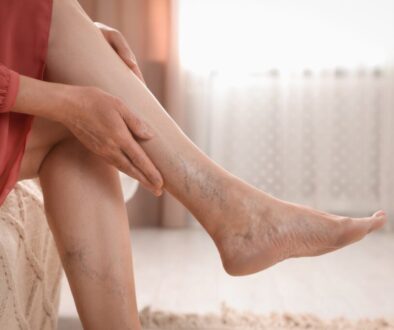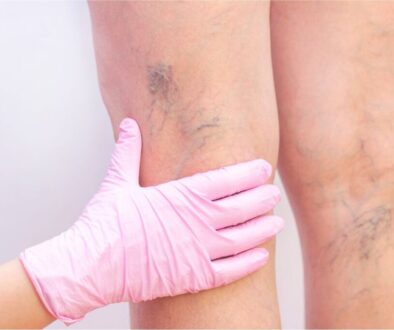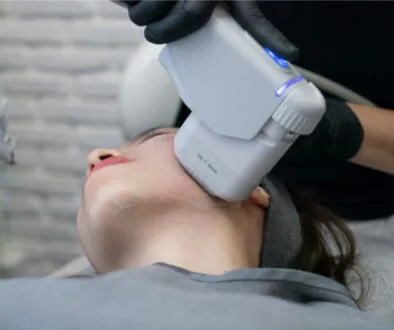Why Are My Ankles Dark? Top Causes and How to Treat Them

Published August 15, 2025
Ever glanced down and wondered, “Why are my ankles dark?” You’re not alone, and you’re not imagining things. Brown ankle discoloration can be more than a cosmetic quirk; it’s often your body’s way of waving a tiny flag that something deeper is happening.
From circulation issues to skin conditions, ankle discoloration has many possible causes, and knowing the “why” is the first step toward the “how” of treatment. In this guide, we’ll break down the top culprits, explain what your ankles might be trying to tell you, and share practical ways to restore both their health and appearance.
Common Reasons Behind Dark Ankles
If you’ve asked yourself, “Why are my ankles dark?”, the answer often lies beneath the skin. Brown ankle discoloration can result from poor circulation, especially when your veins struggle to push blood back to the heart.
This condition, known as chronic venous insufficiency, may cause tiny iron deposits, called hemosiderin, to build up under the skin, darkening it over time. Other triggers include past injuries, skin inflammation, or certain medical conditions like diabetes.
While discoloration may seem like a purely cosmetic concern, it’s often a warning sign that your legs need better blood flow and medical attention to prevent worsening symptoms.
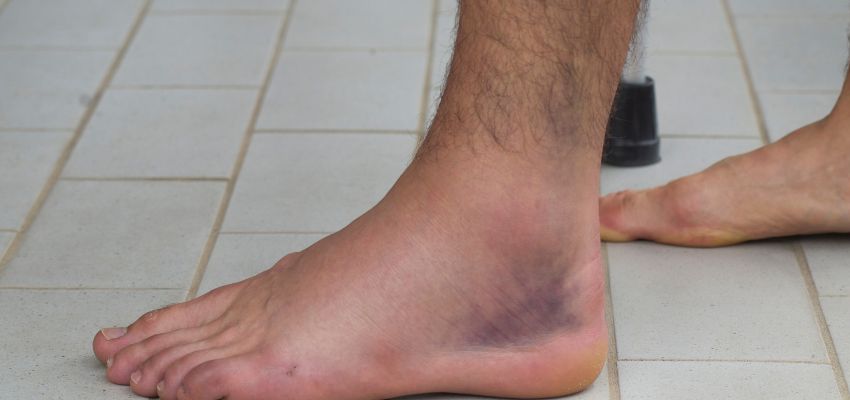
How Poor Circulation Triggers Ankle Discoloration
Your veins fight relentlessly against the force of gravity to pump blood back to your heart up to the legs. During weakening or damage of the venous valves, blood may stagnate in the ankle, increasing the pressure in other organs.
The pressure may cause the small blood cells to rupture, releasing iron which makes the skin change in color to brown or purplish. With time, this may develop into stasis dermatitis, which makes one experience itchy, dry and irritated ankles.
Neglecting them may lead to the problem getting severe to an extent of painful swelling or even the development of open lesions. Be aware of poor circulation and that you are catching it in the earliest stages so you have the best opportunity to safeguard the health and appearance of your ankles.
Varicose Veins and Dark Ankle Skin
|
Aspect |
Details |
Why It Matters |
Possible Solutions |
|
Cause |
Varicose veins occur when vein valves weaken, allowing blood to flow backward and pool in the lower legs. |
Poor circulation leads to increased pressure, which can damage skin and blood vessels. |
Lifestyle changes (exercise, elevating legs, compression stockings). |
|
Skin Impact |
Pooling blood increases pressure, leading to dark pigmentation around the ankles. |
Discoloration is not just cosmetic—it signals underlying venous issues. |
Dermatological care plus vein treatment can help fade pigmentation. |
|
Symptoms |
Heaviness, swelling, aching, itching, or burning sensations in legs. |
Ignoring symptoms may worsen skin damage and circulation problems. |
Early diagnosis prevents complications. |
|
Complications |
Chronic venous insufficiency, venous eczema, and venous ulcers (open wounds near ankles). |
Venous ulcers are painful, slow to heal, and can greatly affect quality of life. |
Medical interventions: sclerotherapy, laser treatment, or surgery. |
|
Benefits of Treatment |
Improves blood flow, reduces ankle discoloration, relieves discomfort, and prevents ulcers. |
Restores confidence and prevents long-term skin and vein damage. |
Combination of medical treatments + home care (hydration, movement, skincare). |
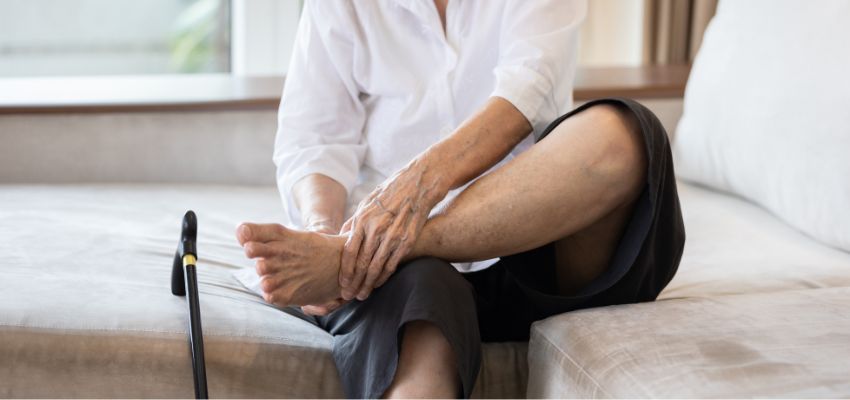
Diagnosing the Cause of Brown Ankle Discoloration
The first step towards getting to the bottom of ankle discoloration is a series of medical assessments. To investigate circulation patterns in a vein and detect clots, a vein specialist could use a color duplex ultrasound to observe the blood circulation.
This is a noninvasive procedure to get clear pictures of your veins using sound waves in real time. In exceptional instances, another type of imaging such as Magnetic Resonance Venography (MRV) can be ordered to give a clear image.
In addition to imaging, your physician will also check your ankles either swelled, warm, or tender. Identifying the cause is crucial as there is hardly a lasting effect when one deals with the symptoms without the cause.
Treatment Options to Restore Healthy-Looking Ankles
Depending on the intensity and cause of the ankle discoloration, the appropriate treatment is selected. In most instances, the initial measure is the use of compression stockings, which are worn to support a gentle but sufficient amount of pressure on the legs to promote the upward flow of blood, and thereby curb pooling.
Other adjustments can be made to your lifestyle, and these include walking on the streets daily, raising your legs, and sitting or standing in one place for a very long period of time. In case these measures are insufficient, a minimal invasive surgery can be prescribed, including: endovenous laser ablation, foam sclerotherapy, and microphlebectomy.
The methods are used to seal or open destroyed veins enabling the re-direction of blood to another pathway that is intact. With increased circulation many find that discoloration may go away, and they feel (and appear) better as time progresses.
FAQs
How do you fix dark ankles?
Dark ankles can often be improved by treating the cause, like poor blood flow or skin problems. Wearing compression socks, walking more, and keeping your legs raised can help. A doctor may suggest special treatments if home care isn’t enough.
How to remove dark ankles fast overnight?
There’s no safe way to remove dark ankles overnight. You can help them look better by moisturizing the skin and avoiding tight shoes. For lasting change, treat the cause over time.
Can you reverse ankle discoloration?
Yes, in many cases you can make ankle discoloration lighter. If you improve blood flow and treat the cause, the dark color may fade slowly. Some marks may take months to go away.
What vitamins help with dark ankles?
Vitamins C and E can help keep skin healthy and strong. They may also help repair damage and improve how your skin looks. Eating fruits, nuts, and vegetables is a good start.
What is the best vitamin for blood circulation?
Vitamin B3 (niacin) is often linked to better blood flow. It helps your blood vessels stay healthy. You can get it from foods like chicken, fish, and peanuts.
Final Thoughts
Dark ankles are common, but they can be a sign of a bigger problem with your blood flow or skin health. The good news is that with the right care, you can often make the color lighter and feel better.
Simple steps like walking, using compression socks, and getting medical advice can help. At Four Seasons Laser Center in Boca Raton, we offer safe, gentle treatments to improve skin health and boost confidence.
Our experienced team uses the latest technology to give great results. Don’t wait, book a free consultation today and take the first step toward healthier, brighter ankles.
We Are A Medical Beauty Spa In Boca Raton Florida
Four Seasons Laser Center is a highly renowned med spa in Boca Raton Florida. Our state of the art equipment is run by highly trained and experienced staff so you can rest assured that you are in good hands. We offer laser hair removal services for your whole body, PDO Threads facelift, safe and effective Plasma Fibroblast skin tightening, and other advanced medical beauty services to help you look your best. Contact us now to book a free consultation.

Fact Checked By Experts
This content has been thoroughly fact-checked by our team of internal experts. For further information regarding the editorial standards we adhere to, please click here.

About The Author
Julie Fortuna is a dedicated writer for Four Seasons Laser Center, specializing in advanced laser treatments and aesthetic services. Let Julie translate complex procedures into clear, practical insights.
